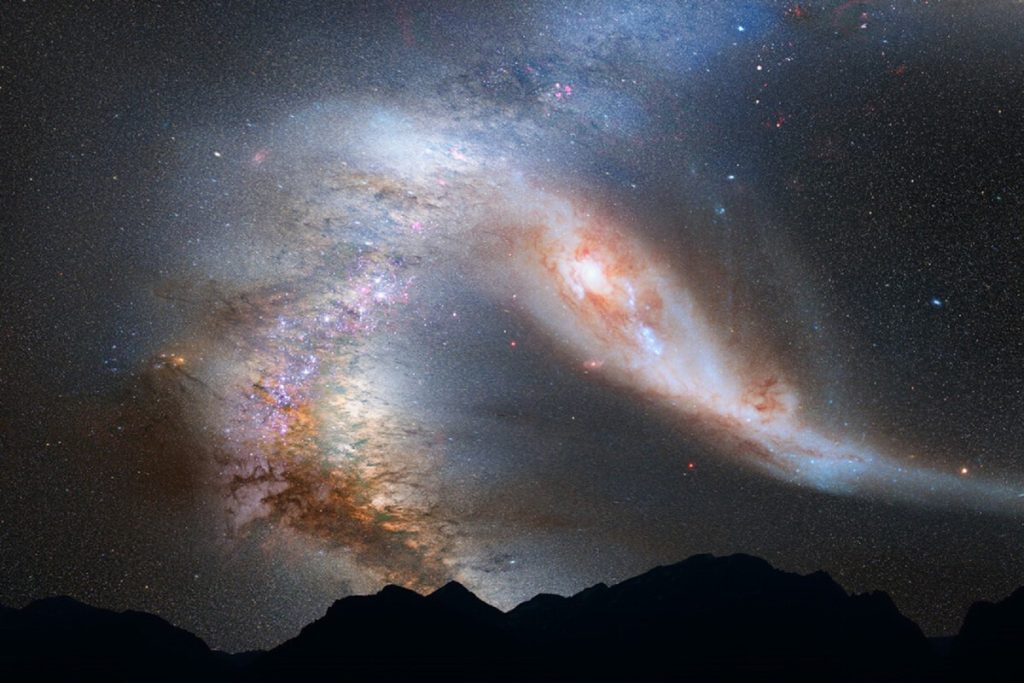With the arrival of the new month, astronomy enthusiasts won’t be bored: from comets to dazzling conjunctions.

The astronomical outlook for the month couldn’t be more exciting. In fact, we can confidently say it’s one of the most event-packed of 2024: eclipses, comets, and a very special full moon. As always, prepare your equipment, whether it’s just a simple camera or a telescope, because the month is truly thrilling.
Annular Eclipse (and New Moon)
This is the eighth and final phase of the lunar cycle, the one that occurs between the last quarter and the New Moon. Waning phases represent the Moon becoming less illuminated. In other words, at the start of this phase, we see almost half of the lunar disk fully illuminated, and then the illuminated area slowly decreases until the New Moon phase.
- When: October 2
- Where it will be visible: The southern half of South America and (very partially) from some points on the west coast of North America. Only a small strip in Patagonia and the Falkland Islands will be able to see it in full.
Comet C/2003 Tsuchinshan
We’ve talked a lot about it. This day will be optimal to try to spot the comet discovered in 2003, as it will reach its peak brightness.
- When: October 5
- Where it will be visible: Worldwide.
Draconids
The Draconids aren’t typically among the most important meteor showers of the year. They are usually visible between October 6 and 10, and at their peak, they reach 10 meteors per hour. Their origin is the comet 21P Giacobini-Zinner, an object discovered in 1900.
- When: October 7
- Where it will be visible: Worldwide.
First Quarter Moon
An event where the increase in lunar illumination will become more visible from Earth as it progresses toward the full moon.
- When: October 10
- Where it will be visible: Worldwide.
Meteor Shower: Delta Aurigids Peak
The truth is that the Delta Aurigids aren’t widely studied. Current information on this meteor shower is based on video data from the IMO since the late 1990s.
- When: October 11
- Where it will be visible: Observation conditions are not favorable. The meteor shower will peak during the waxing gibbous moon, which will obscure most of the meteors. This shower is mainly for die-hard meteor hunters, as it produces a maximum of two meteors per hour.
C/2023 A3 (Tsuchinshan-ATLAS)
We continue to track the comet as it approaches our planet in its journey out of the solar system. Early observations estimate that this orbital journey lasts about 80,000 years, so we don’t expect to see it back anytime soon.
- When: October 13
- Where it will be visible: Worldwide.
Full Moon (Supermoon)
One of the major highlights of the month. Here, the Moon will not only be fully illuminated in the night sky, but it will also be near its perigee: 357,367 kilometers from our planet. It will also be the largest Supermoon of the year.
- When: October 17
- Where it will be visible: Worldwide.
Meteor Shower: Epsilon Geminids Peak
The Geminids are a nice complement to the Orionid meteors in general, as they reach their peak activity around the same time.
- When: October 18
- Where it will be visible: This year, the conditions for observing the Epsilon Geminids are poor. The meteor shower will peak two days after the Full Moon, making it significantly difficult to observe due to the moonlight.
Meteor Shower: Orionids
Another key moment of the month. The Orionids are known for their fast meteors and occasional bright fireballs. They enter Earth’s atmosphere at 66 km/s. These meteors also produce ionized gas trails that last several seconds. Overall, they are among the most beautiful meteor showers of the year.
- When: October 21-22
- Where it will be visible: They can be seen between October 2 and November 7. Due to the proximity of the Full Moon, it will be hard to capture any of the 20 meteors per hour.
Last Quarter Moon
The final lunar phase that will occur in October.
- When: October 24
- Where it will be visible: Worldwide.




